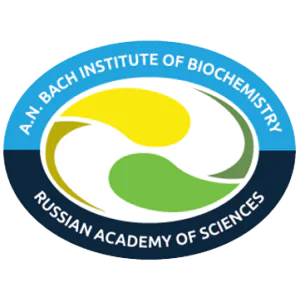
Two sides of quantum-based modeling of enzyme-catalyzed reactions: Mechanistic and electronic structure aspects of the hydrolysis by glutamate carboxypeptidase
We report the results of a computational study of the hydrolysis reaction mechanism of N-acetyl-l-aspartyl-l-glutamate (NAAG) catalyzed by glutamate carboxypeptidase II. Analysis of both mechanistic and electronic structure aspects of this multistep reaction is in the focus of this work. In these simulations, model systems are constructed using the relevant crystal structure of the mutated inactive enzyme. After selection of reaction coordinates, the Gibbs energy profiles of elementary steps of the reaction are computed using molecular dynamics simulations with ab initio type QM/MM potentials (QM/MM MD). Energies and forces in the large QM subsystem are estimated in the DFT(PBE0-D3/6-31G**) approximation. The established mechanism includes four elementary steps with the activation energy barriers not exceeding 7 kcal/mol. The models explain the role of point mutations in the enzyme observed in the experimental kinetic studies; namely, the Tyr552Ile substitution disturbs the “oxyanion hole”, and the Glu424Gln replacement increases the distance of the nucleophilic attack. Both issues diminish the substrate activation in the enzyme active site. To quantify the substrate activation, we apply the QTAIM-based approaches and the NBO analysis of dynamic features of the corresponding enzyme-substrate complexes. Analysis of the 2D Laplacian of electron density maps allows one to define structures with the electron density deconcentration on the substrate carbon atom, i.e., at the electrophilic site of reactants. The similar electronic structure element in the NBO approach is a lone vacancy on the carbonyl carbon atom in the reactive species. The electronic structure patterns revealed in the NBO and QTAIM-based analyses consistently clarify the reactivity issues in this system.
Top-30
Journals
|
1
2
|
|
|
Moscow University Chemistry Bulletin
2 publications, 25%
|
|
|
International Journal of Molecular Sciences
1 publication, 12.5%
|
|
|
Molecules
1 publication, 12.5%
|
|
|
Journal of Computer-Aided Molecular Design
1 publication, 12.5%
|
|
|
Russian Chemical Bulletin
1 publication, 12.5%
|
|
|
Lomonosov chemistry journal
1 publication, 12.5%
|
|
|
Biochimica et Biophysica Acta - Molecular Cell Research
1 publication, 12.5%
|
|
|
1
2
|
Publishers
|
1
2
|
|
|
MDPI
2 publications, 25%
|
|
|
Springer Nature
2 publications, 25%
|
|
|
Pleiades Publishing
2 publications, 25%
|
|
|
Moscow University Press
1 publication, 12.5%
|
|
|
Elsevier
1 publication, 12.5%
|
|
|
1
2
|
- We do not take into account publications without a DOI.
- Statistics recalculated weekly.








